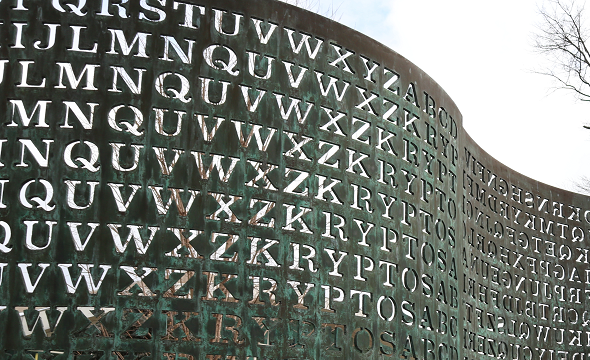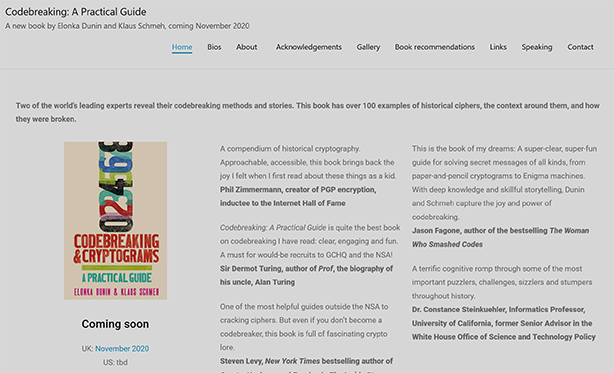CNN.com, one of the most popular news portals in the world, has published an article about the Kryptos sculpture. And then, there’s a question about Kryptos I would like to ask my readers.
I’m sure most of my readers have already heard about it, but let me mention it again: My new book Codebreaking: A Practical Guide will be published in November 2020. If you’re looking for a nice Christmas present, here you go. The book will be sold at a price of about €18 or $20.
Book website launched
My co-author Elonka Dunin and I have now launched our official book website.
The site is still work-in-progress, but it already provides a lot of valuable information. Among other things, it includes an “author bios”, a “gallery”, and an “FAQ” page. The table of contents and a literature list are available online, too. In addition, our acknowledgement list, which includes all persons who have contributed to this book, has its own page.
A CNN article about Kryptos
Speaking of Elonka, the CNN website, one of the most important news portals in the world, recently featured her in an article about the Kryptos sculpture. This article doesn’t provide much new information, but at least it contains a few nice quotes such as the following:
I have one individual who contacts me once a week at exactly the same second – I think it’s Tuesdays at 8:23 in the morning – with a decrypt, and this person has been doing this for two-and-a-half years.
Kryptos creator Jim Sanborn
In addition, this publiction is a nice summary of the Kryptos topic and is therefore worth reading for every crypto enthusiast.
If you look at the fifth photograph shown in the article, you might spot Mike Godwin, a friend of Elonka’s. Mike is known as the creator of Godwin’s Law (also known as Godwin’s rule of Hitler analogies), a famous internet adage. He has provided the following advertisement statement (blurb) for our codebreaking book:
Riveting. Dunin and Schmeh show us that we each have our own inner codebreaker yearning to be set free. Codebreaking isn’t just for super-geniuses with supercomputers, it’s something we were all born to do.
A question for my readers
Finally, I would like to ask my readers a question that was recently brought up by Leon Schulman (he contributed to the book and is therefore mentioned on our acknowledgement list) on the Kryptos mailing list. Leon wrote:
Mr. Sanborn apparently registered a copyright on the plaintext of Kryptos/K4 – the two registered copyright records are:
Kryptos – TX0006612228 (1990)
Kryptos text – TXu001663615 (2010)
These two documents have never been discussed in the Kryptos community. Perhaps, they contain information that is helpful for breaking the fourth Kryptos part (the others have already been solved). Does a reader of this blog have access to the US copyright records database? Is there another way to get hold of these documents? If so, please let us know.
Follow @KlausSchmeh
Further reading: The Top 50 unsolved encrypted messages: 4. Kryptos
Linkedin: https://www.linkedin.com/groups/13501820
Facebook: https://www.facebook.com/groups/763282653806483/





Kommentare (8)